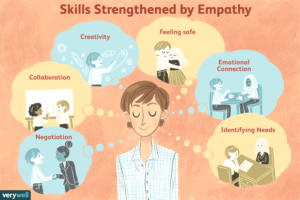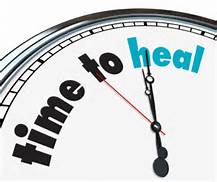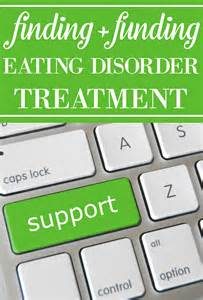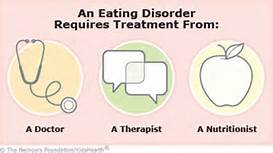

Kindness is a quality that seems inherent in human beings. Like most vital things, however, it is at once very simple and very complex, with multiple layers that can be explored extensively.
On the simplest level, kindness is showing consideration to others, as opposed to being insensitive, harmful or apathetic. On this basic level, kindness has universal appeal. Not only human beings, including infants and children, but also animals appreciate kindness.
The reason for this is simple. Our most basic motivation is to strive for survival, well-being and happiness. Being treated by others with cruelty, indifference or insensitivity goes directly against this basic wish. So, we want others to treat us with kindness and this is common to all humans.
Additionally, as social animals, we need others’ kindness to survive. As with all mammals and birds, we are not self-sufficient at birth, or even for several years thereafter. In infancy, without maternal care and the care of others, we would quickly perish. Therefore, this basic need for care means that even on a cellular level–deep within our biology and physiology–we respond to kindness. We are interdependent and our bodies know it.
For instance, our nervous system is wired in a way that affective touch, such as the kind or loving touch of someone we feel close to, activates different parts of the brain (the posterior insular cortex and anterior cingulate cortex). This is different from discriminative touch–the touch we use to feel something ourselves (which primarily activates the somatosensory cortex)–which activates different nerve fibres. Affective touch can make us feel relaxed, safe and calm, activating our parasympathetic or “rest and digest” response–but typically only if our brain interprets it as coming from a kind, non-threatening source. If the touch comes from someone we don’t like, it can have quite the opposite effect, causing us stress and a completely different (and less healthy) physiological and chemical response in our body. This activation of the sympathetic nervous system (the “flight or fight response”) can cause the release of stress hormones (such as adrenaline and cortisol) in our bodies, elevating heart rate and blood pressure, and increasing inflammation. This activation occurs when we perceive another’s touch as unkind.
A great deal of research has emerged on the long-term importance of affective touch for infants as well as its impact on adults. From this we can see that kindness is not a mere concept in our heads; it is also a biological reality in our bodies. There are multiple layers of complexity to the science of kindness that we have yet to explore.
We can see that kindness supports happiness and flourishing even on social, national and international levels. ‘The World Happiness Report’, a project undertaken by the United Nations, has shown that even more than economic factors, happiness and life satisfaction are facilitated by factors such as trust and social support, which are themselves manifestations of kindness. It should come as no surprise to us that kinder societies are happier societies; it may, however, be surprising to some to know that kindness is even more important than wealth. In fact, contrary to the idea that simply having more wealth results in more happiness, data from the 2019 World Happiness Report suggest that generosity (showing kindness by giving wealth away) is also positively correlated with happiness in societies. This coincides with other data showing that we tend to feel rewarded when we act kindly and benefit others.
Paul J. Zak is founding director of the Center for Neuroeconomics Studies at Claremont Graduate University. He has a Ph.D. in economics from University of Pennsylvania, and post-doctoral training in neuroimaging from Harvard. Dr. Zak’s lab discovered in 2004 that an ancient chemical in our brains, oxytocin, allows us to determine who to trust.
In experiments run over the last 10 to 15 years, in Dr. Zak’s lab and in his field, he and his colleagues have shown that the brain chemical oxytocin is released when someone is nice to us in objective ways (for example, when a stranger shares money with us). Oxytocin is the mammalian signal that tells mothers (and in some species fathers) to care for their offspring. It is the chemical basis for parental love. What we’ve shown is that oxytocin release is stimulated by acts of kindness or trust by complete strangers. The feeling people get when their brains release oxytocin is one of empathy or emotional connection.
Empathy is the product of a brain circuit Dr. Zak calls HOME (for Human Oxytocin Mediated Empathy). How does this brain circuit work? Oxytocin does not work alone. It activates a brain circulate that makes it feel good to do good for others. The HOME circuit does this by giving us a feeling of pleasure when we help others and by reducing our anxiety when we have a positive social interaction. Our brains are designed to engage with strangers and to care about them. This is what it means to be a social creature.
The distinction between romantic love and non-romantic love is clear: Biologically they appear to be quite similar and to use oxytocin and the HOME circuit. They may feel differently, but nature is conservative and reuses brain circuits for many purposes. Dr. Zak states he thinks this is good though. All love is good and valuable and important. For example, Dr. Zak with colleagues showed experimentally that touch releases oxytocin so he started hugging people instead of shaking hands at work. This earned him the nickname “Dr. Love.” At first this was a bit embarrassing to the doctor he stated but then he started to think, what better thing can he do on the planet but to give people love so now he states he is happy to be Dr. Love.
Another view on this topic is, it’s often said that we should put ourselves in another person’s shoes in order to better understand their point of view. But psychological research suggests this directive leaves something to be desired: When we imagine the inner lives of others, we don’t necessarily gain real insight into other people’s minds.
Instead of imagining ourselves in another person’s position, we need to actually get their perspective, according to a recent study (pdf) in the Journal of Personality and Psychology. Researchers from the University of Chicago and Northeastern University in the US and Ben Gurion University in Israel conducted 25 different experiments with strangers, friends, couples, and spouses to assess the accuracy of insights onto other’s thoughts, feelings, attitudes, and mental states.
Their conclusion, as psychologist Tal Eyal tells Quartz: ”We assume that another person thinks or feels about things as we do, when in fact they often do not. So we often use our own perspective to understand other people, but our perspective is often very different from the other person’s perspective.” This “egocentric bias” leads to inaccurate predictions about other people’s feelings and preferences. When we imagine how a friend feels after getting fired, or how they’ll react to an off-color joke or political position, we’re really just thinking of how we would feel in their situation, according to the study.
Come back tomorrow for part 2









